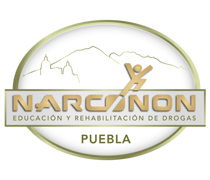Methamphetamine Health Risks
Methamphetamine is a strong stimulant drug that is available in prescription form and in an illicit form sold on the street. In prescription, it is called Desoxyn. It is prescribed by some doctors when a child is said to experience Attention Deficit Hyperactivity Disorder (ADHD) and has some use in the treatment obesity. A few decades ago, stimulants similar to methamphetamine were broadly used for weight loss but the drug became more restricted in use after its abuse and addictive potential were realized.

On the street, methamphetamine may be sold as a powder or in crystalized form. It is manufactured in large illicit labs, most of which are located in Mexico or the Central Valley of California. Thousands of individuals across the United States and Canada have made smaller batches of this dangerous drug after they either acquired enough cold medication to extract the precursor chemicals they needed, or found an illicit source for those chemicals. New methods of manufacturing this drug were developed several years ago that permit methamphetamine to be “cooked” in a two-liter soda bottle, using just a small quantity of cold medicine. With this development, the number of meth labs being located began to rise steeply. In 2012, there were 11,210 meth lab seizures, dumpsites or cleanups needed in the US.
Methamphetamine is a highly addictive drug with some of the harshest physical effects of any drug. The fact that just one or a few uses can trap a person in addiction means that even if a user sees the physical deterioration occurring, he (or she) may not be able to stop the damage. An addict very often needs help to stop abusing the substance he is addicted to.
Methamphetamine’s Ingredients are Part of the Problem
It is dangerous but not particularly hard to make methamphetamine. When making methamphetamine, a long list of toxic or corrosive chemicals is used. In addition to over-the-counter cold medication, a methamphetamine cook uses these chemicals plus others:
Lye: corrosive household or industrial substance
Anhydrous ammonia: a chemical fertilizer that is often stolen from farms; damages skin, lungs, throat and eyes
Iodine: healthy in very small quantities, toxic in higher quantities
Red phosphorus: found in match heads or fireworks; when combined with iodine, forms hydriotic acid, a strong acid
Ether: surgical anesthetic
Lithium: obtained from camera batteries
Drano: brand name for the highly corrosive drain cleaner
Brake fluid: highly toxic and combustible; can eat the paint right off your car
Butane: otherwise known as lighter fluid; highly combustible and toxic
Hydrochloric acid: Industrial acid; will literally eat away one’s flesh
Muriatic acid: driveway cleaner
Every person who uses the drug is exposed not only to the harsh stimulant itself but also traces and residues of all these corrosive and toxic chemicals that were used to make it.
The effects of methamphetamine on the body and the mind are brutal. Keep reading to find out what organs or aspects of one’s health take the worst beatings from methamphetamine.
Resources:
